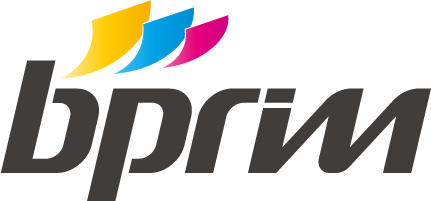PDCA Cycle: A Comprehensive Guide to Continuous Improvement
This model is also referred to as the Deming cycle, Shewhart cycle, plan-do-check-adjust, or plan–do–study–act (PDSA). Once the problem is clearly defined, teams should establish specific, measurable objectives that align with broader organizational goals. Creating a detailed action plan that outlines the steps needed to achieve these objectives is essential.
- The Planning phase is crucial in setting objectives and developing strategies.
- A culture is defined as a set of unwritten rules and behaviours observed by a group.
- Moreover, your team will be able to identify problematic parts of the current process and eliminate them in the future.
- This model is also referred to as the Deming cycle, Shewhart cycle, plan-do-check-adjust, or plan–do–study–act (PDSA).
- With each iteration, the cycle becomes more tailored to the specific operational nuances it addresses.
- With a sound analytical foundation, organizations can set clear objectives and formulate hypotheses with greater confidence.
- The Deming cycle related heavily to the concept of product quality, innovation, and learning-by-doing over the entire life cycle of a product.
The Universal Applicability of the PDCA Cycle
PDSA is an analytical process that considers the process as is, analyzes it further, revises it as appropriate and then repeats the cycle for continuous improvement. The PDSA cycle includes internal and external customers into considers, as they can provide feedback about is the change plan works or not. The customer defines quality and hence it is appropriate to involve them in the process, to increase acceptance of the end product. A CMMS serves as a centralized repository for maintenance data, including work orders, asset histories, and performance metrics. By leveraging this data in the Plan phase of the Deming Cycle, organizations can make informed decisions based on facts rather than assumptions.
Teams implement improvements (Do) to achieve the targets. Then they measure (Check) the change to evaluate performance against the target. If the team has achieved a measurable gain, it standardizes (Act) the new method by updating the standardized which of the following is iterative four stage approach for continually improving the process work.
What is Lean?
We will walk through each phase of the PDCA cycle, illustrate its significance with examples, and offer guidance on overcoming common challenges encountered during its implementation. In the next section, we will dive deeper into each of these four steps. Afterwards we will discuss how the PDCA cycle can support Kaizen and continuous improvement. As an example, imagine a manufacturing process that is producing high levels of scrap.
If the changes were successful, they may be standardized and implemented on a larger scale. Conversely, if issues were identified, organizations can adjust their processes accordingly to prevent recurrence. This stage emphasizes the importance of documenting lessons learned and best practices to inform future cycles of improvement. This combination allows organizations to identify inefficiencies, implement targeted strategies, and evaluate their effectiveness to reduce downtime and optimize resource allocation. This phase demands a detailed understanding of the problem.
Project Leader at Boston Consulting Group (BCG)
A PDCA stands for Plan Do Check Act Cycle also called as Shewhart cycle. Mr. Walter A. Shewart first introduced PDCA in 1939 in one of his books and there after it was Dr. Deming who emphasized it has to be changed to PDSA in 1950’s. In product design and development, the Deming Cycle helps teams iterate on prototypes. For instance, a company may plan a new product feature, create a prototype, test it with users, and gather feedback to refine the design. This iterative process ensures that the final product meets customer needs and quality expectations. The final stage focuses on taking corrective actions based on the findings from the « Check » phase.
- In product design and development, the Deming Cycle helps teams iterate on prototypes.
- Both PDCA and Kaizen strive for continuous improvement through small, incremental changes and creating an organizational culture of Lean thinkers and problem-solvers.
- The PDCA cycle, an acronym for Plan-Do-Check-Act, is a systematic series of steps for gaining valuable learning and knowledge for the continual improvement of a product or process.
- The Deming Cycle promotes a culture of continuous improvement by encouraging organizations to learn from each iteration and make data-driven decisions.
- Manufacturers can utilize the Deming Cycle to enhance employee training programs.
At the « Check » stage in PDCA, the team needs to audit its plan’s execution and see if its initial plan worked. In contrast, the « Study » stage in PDSA aims to analyze in depth the results of any change applied at each step, ensuring long-term process improvements. Either way, you can use both models by studying and checking the results obtained from tests. The Deming Cycle promotes a culture of continuous improvement by encouraging organizations to learn from each iteration and make data-driven decisions.
Concluding Thoughts on PDCA
In the plan phase, the team would brainstorm possible causes using lean tools like afishbone diagramor askingfive whys. Based on the most likely cause they formulate a plan to remedy the problem. The manufacturing company implements the training program for a small group of employees. Feedback is collected through Google Forms to gauge the effectiveness of the training. Additionally, teams should anticipate potential obstacles and risks, devising strategies to mitigate these challenges. Engaging stakeholders during this phase ensures buy-in and collective input, enhancing the plan’s feasibility and acceptance.
In aerospace manufacturing, where precision and safety are critical, the Deming Cycle can be tailored to focus on stringent quality assurance processes. Manufacturers can apply the Deming Cycle to improve supplier relationships and material quality. Finally, the Act phase ensures feedback informs future cycles. Organizations must react to insights gained during evaluation.
It is applied organization-wide and requires a cultural shift, where quality becomes a core value. TQM incorporates various tools and methods, including the PDCA’s philosophy. Local and state governments have used the Deming Cycle to improve public service delivery and policy implementation.
Related posts
The Evolution of Forex Trading Platforms: A Glimpse into the Future
Interactive Brokers is the best broker for professional traders, offering a range of sophisticated p

